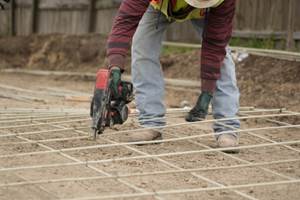Faster...is better
Ten months….that’s a lot of time, in my book. Why do public works agencies tolerate such drawn-out projects using traditional materials, when composites are faster, more efficient and more durable?

Ten months….that’s a lot of time, in my book. I have been casually observing the replacement of a bridge near my home in Colorado, a bridge over a tiny stream on a road that leads to a park. The existing bridge was demolished, and new abutments built, followed by placement of six steel girders, with several cranes, then a poured concrete deck. Once the deck was fully cured (under blankets and tarps), work progressed slowly on the parapets and access aprons, and finally, this week, an asphalt cover was placed. It took nearly one year to build a very small, two-lane bridge with a span of approximately 30 feet.
Well, it may be that the project posed some difficult challenges that took extra time, and the Colorado winter certainly didn’t help speed things along. But I couldn’t help but think, every time I passed the construction site, about the many stories we’ve published over the years about composite material solutions for bridges. The main point of those stories has always been that the bridge is built by a composites fabricator, off-site, and delivered in a modular fashion, allowing installation to be accomplished in days, or even, hours. The on-site labor savings is significant, heavy cranes aren’t required, the road opens sooner….surely the time and effort savings of that scenario outweigh the higher material cost — yes?
Unfortunately, the answer seems to be “no” more often than not. The tried-and-true methods of cured-in-place concrete persist in many departments of transportation, even though the Federal Highway Administration (FHWA) has been pushing, for four years now, accelerated bridge construction (ABC) initiatives under the name Every Day Counts (EDC). EDC is a collaborative effort that involves the FHWA, the American Association of State Highway and Transportation Officials (AASHTO), state departments of transportation (DOTs), local agencies, and industry, and is aimed at reducing overall project delivery time and impacts from onsite construction. Among the many ABC alternatives (which include better planning, fee structure changes and greater right-of-way and utility flexibilities), is a construction concept called Prefabricated Bridge Elements and Systems, or PBES.
PBES include not only the structural components of a bridge that can be built at offsite locations, like a composite deck, but also components that can be constructed without traffic disruption adjacent to construction sites, given sufficient room and access. Examples include full-depth precast concrete deck panels, steel grid decks, aluminum deck panels, modular beams with decks, full-width beams, prefabricated truss spans, precast segmental spans, pier elements, abutment and wall solutions and miscellaneous items, such as prefabricated parapets and approach slabs. They also could include preassembled composite superstructures or complete bridges.
Ben Beerman of the FHWA wrote about PBES for CompositesWorld in 2012 (http://www.compositesworld.com/columns/prefabricated-bridge-elements-and-systems-an-opportunity-for-composites), but even the FHWA itself is struggling with convincing entities to adopt the concept. “PBES often cost more at the bid stage, and they require planning and coordination,” says Scott Reeve, president of Composite Advantage (Dayton, Ohio, USA), a composite bridge design and build firm. “But, they have less potential for change orders that inflate the final costs of long projects.” He points to an example of how PBES can accelerate a project significantly: the Mitchell Gulch bridge construction project, ironically, located in the State of Colorado. A deteriorated timber structure on a secondary road in Douglas County, Colorado needed replacement, and CDOT and designer Wilson and Company (Denver, Colo., USA) seized the opportunity to use precast concrete modules, including precast concrete deck girders that acted as the actual bridge deck. After significant upfront planning, advance part production and preliminary site work that didn’t disrupt traffic, the old bridge was swiftly demolished starting at 7:00 pm on a Friday night (with demolition completed in 5 hours). The completed precast elements were then put in place in a complex choreography, and by Sunday afternoon of the same weekend, paving was underway (here’s a link to that case study story on Mitchell Gulch, on the FHWA Web site: https://www.fhwa.dot.gov/hfl/co2story.pdf).
That’s 2 days and change, compared to 10 months for my bridge. While the Mitchell Gulch example used precast concrete, Reeve points out that if accelerated bridge methods using PBES can be advanced successfully, “It’s a change for the better. The composites industry will get at least part of that work, as more DOTs adopt this approach.” Our aging infrastructure could really benefit from a faster, and better, refresh.
Related Content
Composites end markets: Infrastructure and construction (2024)
Composites are increasingly used in applications like building facades, bridges, utility poles, wastewater treatment pipes, repair solutions and more.
Read MoreGatorbar, NEG, ExxonMobil join forces for composite rebar
ExxonMobil’s Materia Proxima polyolefin thermoset resin systems and glass fiber from NEG-US is used to produce GatorBar, an industry-leading, glass fiber-reinforced composite rebar (GFRP).
Read MoreCCG FRP panels rehabilitate historic Northamption Street Bridge
High-strength, composite molded, prefabricated panels solve weight problems for the heavily-trafficked bridge, providing cantilever sidewalks for wider shared use paths.
Read MoreCirculinQ: Glass fiber, recycled plastic turn paving into climate solutions
Durable, modular paving system from recycled composite filters, collects, infiltrates stormwater to reduce flooding and recharge local aquifers.
Read MoreRead Next
All-recycled, needle-punched nonwoven CFRP slashes carbon footprint of Formula 2 seat
Dallara and Tenowo collaborate to produce a race-ready Formula 2 seat using recycled carbon fiber, reducing CO2 emissions by 97.5% compared to virgin materials.
Read MorePlant tour: Daher Shap’in TechCenter and composites production plant, Saint-Aignan-de-Grandlieu, France
Co-located R&D and production advance OOA thermosets, thermoplastics, welding, recycling and digital technologies for faster processing and certification of lighter, more sustainable composites.
Read MoreDeveloping bonded composite repair for ships, offshore units
Bureau Veritas and industry partners issue guidelines and pave the way for certification via StrengthBond Offshore project.
Read More













.jpg;maxWidth=300;quality=90)







